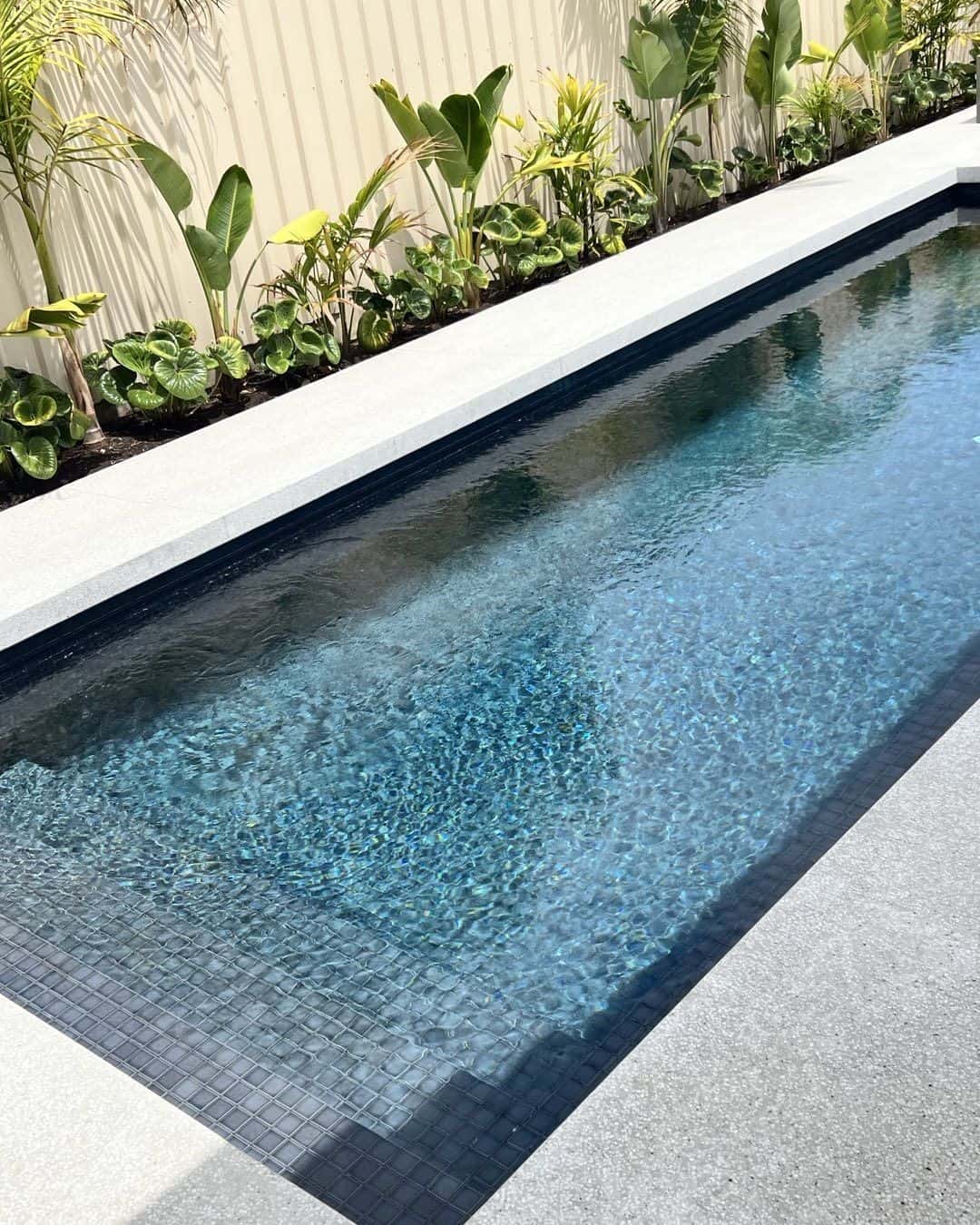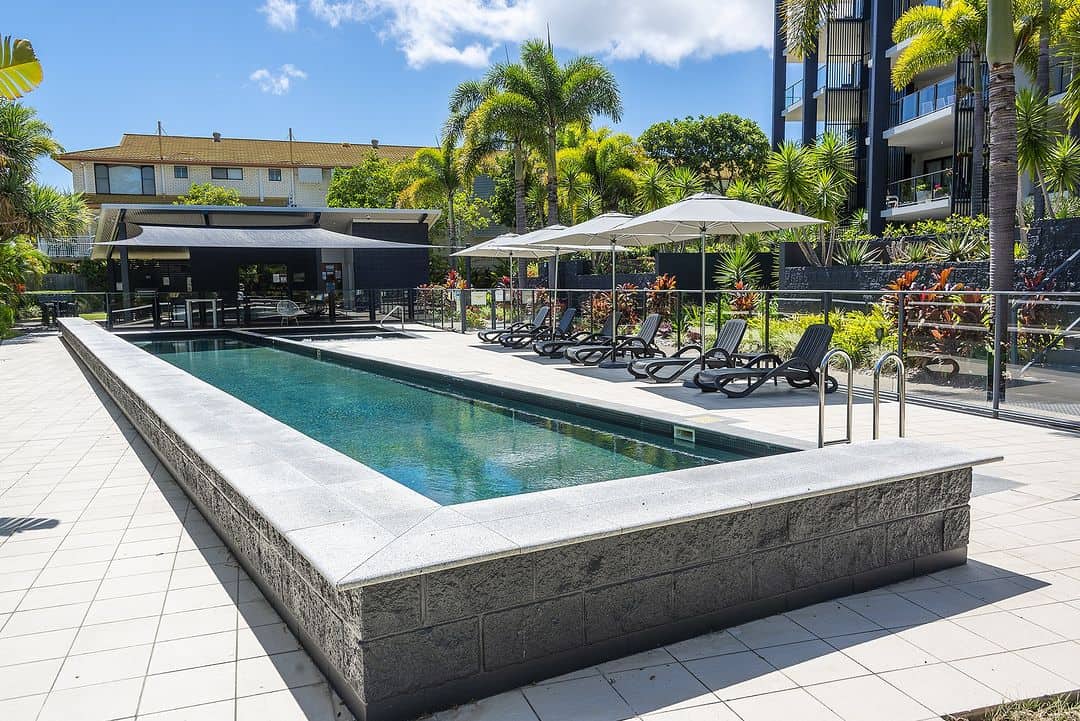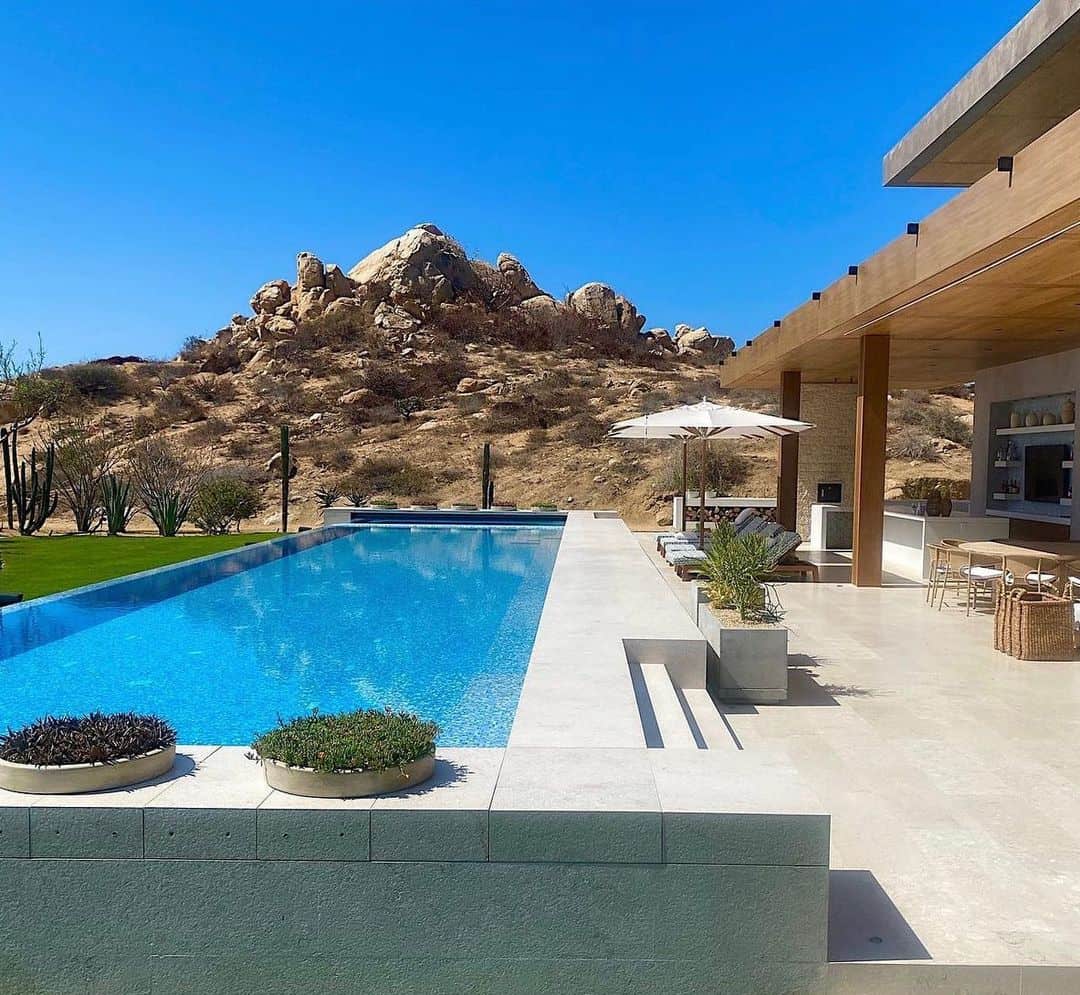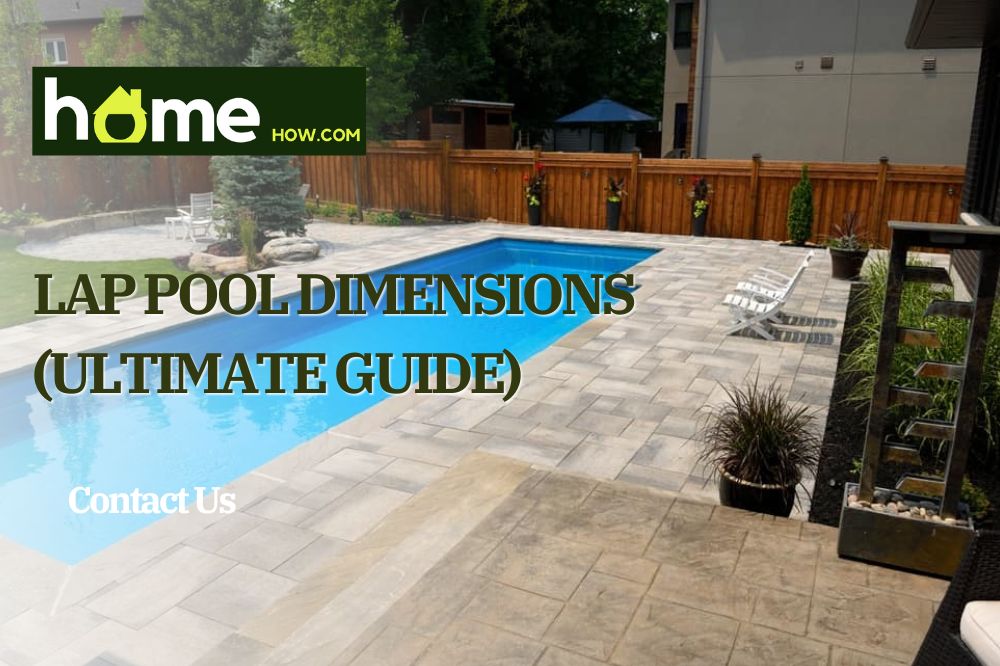Do you want one of your kids to be the next Michael Phelps? Or are you just looking for a pool that will enable you to swim? Well, lap pools are the way to go, then.
But how long, wide or deep should they be? Surely not all sizes are okay. Of course not. That is where we, that is, this article come into play. In it, we tell you all about lap pool dimensions and advantages.
And do not stop reading here if you think your backyard can not fit a lap pool – we have alternatives for it!
Do You Know What Is A Lap Pool?
Unless you have never seen a Hollywood movie, you surely know what lap pool is, even if you are not aware of it. Lap pools are, in most cases, rectangular pools characterized by a large length and small width. So long and narrow, basically.
If we assume that a lap pool has any kind of normal width and depth, the length is its most important parameter. The reason for this is the fact that lap pools are most often used for recreational and competitive swimming.
Lap Pool Dimensions
Let’s go through each of the lap pool’s dimensions and see what their minimums are!
1. Lap Pool Length
As we already said, length is the most important dimension of a lap pool, so building one with a length that will not make you turn every two seconds is imperative.
The recommended minimum is 30 feet because lap pools this long provide swimmers with enough length for a sufficient number of strokes and a good workout.
When it comes to standard and regulation lap pool sizes in, for example, competitive swimming, there are two: short course pools with a length of 82 feet and long course pools with a length of 164 feet.
By the way, the long course pool is the standard lap pool used in the Olympics.
2. Lap Pool Width
The width is probably not a problem for any homeowner. However, one thing you should keep in mind is the number of swimmers who might be swimming simultaneously.
For example, if you want to compete or practice with one or two friends, you should know that the average human wingspan is slightly less than 6 feet. Accordingly to that, a lap pool with three lanes should be at least 18 feet wide.
Regarding commercial and Olympic swimming pools, the width of one lane is a little more than 8 feet in most of them, but there are still some that are a bit narrower, about 6 feet wide.
However, we are aware that many people who want to have a lap pool do not plan to organize the Summer Olympics in their backyard anytime soon。
Such people should know that the minimum width for a pool of this type is 8 feet and that the width of most residential lap pools ranges from 8 to 12 feet.
3. Lap Pool Depth

If you would like to know the answer to the question of how deep a lap pool should be, ask yourself whether you want to touch the bottom of the pool with your feet when you get in or dive straight in.
If you do not plan on diving, you will have to build a lap pool whose depth is smaller than your height (duh). Also, do not forget to buy portable or have builders add permanent stairs that will enable you to enter the pool easily – lap pools usually do not have entry steps.
In case you want both options available, you can build a lap pool with different depths on the shallow and deep ends.
But you should know that the lap pool cost depends greatly on the depth – the deeper it is, the more excavation, digging, and materials it will require.
Regulation pools are a minimum of 6 ft 7 in deep, while the Olympic ones have a depth of 9 ft and 10 in. The minimum depth for residential pools is 3 feet on the shallow and 5 feet on the deep end. Three feet is the minimum because it allows the swimmer to tumble-turn upon finishing a lap.
Also, having not so deep of a shallow end allows you to stand up and gives your kids a place to play. If, however, you have small kids or are scared they might wander towards the deep end, adding a U-shaped extension to your lap pool is a great idea.
Lap Pool Advantages
Let’s check out three of the most important lap pool advantages!
1. Swimming Is One Of The Most Beneficial Types Of Exercise
Since a large part of the world’s population lives in urban centers, most of which are not close to swimmable bodies of water, and the number of public and private pools is much smaller than the number of public and private gyms, many people forget that swimming has many benefits as a form of exercise.
For many, swimming is something they only do when on vacation.
The list and explanation of all the benefits of swimming deserve its separate article, which is why we will mention only some of them: swimming has a positive effect on mental health and mood, improves fitness, helps with weight loss, is effective training, and serves as an ideal alternative to strenuous and/or tedious gym exercises.
2. Lap Pool Increases The Property Value

You might not have thought about this, but a lap pool will increase the value of your home. Yes, it is almost always a luxury, which is why you can not see it as a positive investment. Still, it is nice to know you will be able to recoup some of the value in the future.
How much the real estate value will increase depends on a number of factors, such as the climate in the place where you live, the neighborhood you are in, the number of pools in that neighborhood, the condition and age of the pool, the wishes of the buyer, etc.
Of course, you only need to consider this if you do not see yourself in the same place for a long time.
3. Lap Pools Are Aesthetically Pleasing
Most people who want to build a lap pool care about aesthetics and the interior and exterior of their home, so we must not fail to mention the visual appeal as one of the advantages.
The combination of giant length and tiny width makes lap pools more elegant, official, and serious than regular pools and will undoubtedly attract the attention of anyone who happens to find themselves near it.
Add to that a well-kept lawn, a plant or two, and some dimmed lights along the poolsides, and we can talk about the space where receptions and ceremonies will be held.
Alternatives of Lap Pool

Okay, you are someone who is really interested in swimming but simply does not have enough space in your backyard to house a proper lap pool. Do not worry because we have a solution for you too. And there is not one, but two solutions. But truth be told, they both function on the same principle.
1. Counter-current Pool System
The first solution to getting a seemingly extended swimming lane is to install a device that creates a current of certain width and speed in the pool against which you can swim. It is possible to install them in any pool, even those only 10 feet long.
Devices with counter-current pool systems have one or more nozzles that allow you to adjust the intensity of the artificial stream.
Fun Fact: The world record for the longest continuous swim in a counter-current pool is more than 36 hours long.
2. Swim Spa
A swim spa or spool is a combination of what we described in the previous subheading – a small pool with a built-in device to create a current in the pool.
Swim spas are usually not used as in-ground (although that is also possible but costs more, of course) but as above-ground pools.
They can be even smaller than your regular backyard pools, with dimensions that go as low as 10 feet in length, 7 feet in width, and 4 feet in depth. A lap pool this tiny will definitely not take up too much space, no matter if it is in the ground or not.
An awesome thing about swim spas and devices with counter-current systems is that they allow you to use the stream not only for swimming but also for massaging and relaxation.
Conclusion
Lap pools are long and narrow rectangular pools used chiefly for swimming.
Their length should be a minimum of 30 feet, as that will give most people enough space to squeeze several strokes in one lap. The width depends on the number of swimmers, but the minimum is 8 feet.
When it comes to the depth of a lap pool, it should not be smaller than 3 feet. Even if you will not tumble-turn, you still do not want to swim in too shallow water.
For more info regarding this subject, head to the comments!
